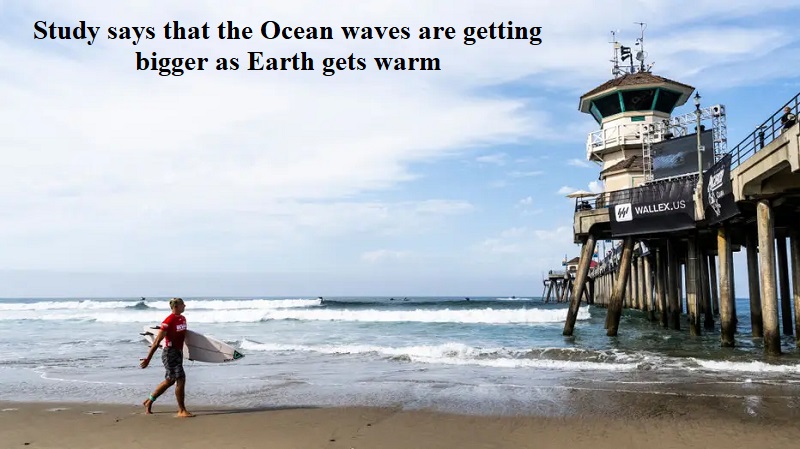
A groundbreaking study has uncovered a concerning trend off the coast of California: waves are surging to greater heights, with surf reaching at least 13 feet (approximately 4 meters) becoming more frequent.
Oceanographer Peter Bromirski from the Scripps Institution of Oceanography led the research, which relied on meticulous analysis of seismic records dating back to 1931. The study provides compelling evidence of the impact of climate change on oceanic dynamics and coastal regions, as reported by the Associated Press.
Bromirski’s unique methodology involved using seismic records to track changes in wave height. When waves crash against the shore, they generate energy that reverberates through the seafloor, and this signal is captured by seismographs used to detect seismic activity. By correlating the intensity of this signal with wave height, the team was able to extend the investigation’s timeline beyond the limited records available from buoys deployed by the National Oceanic and Atmospheric Administration (NOAA) since 1980.
To accomplish this, Bromirski and his team enlisted undergraduate students to meticulously digitize decades’ worth of paper records, a labor-intensive process that took several years. However, the effort proved invaluable in shedding light on the evolution of wave heights along California’s coast over nearly a century.
The study’s results were striking. Average wave heights during winter months have increased by up to a foot since 1970, coinciding with the onset of accelerated global warming. Additionally, the frequency of swells measuring at least 13 feet doubled between 1996 and 2016, compared to the period from 1949 to 1969.
Interestingly, the research revealed that prolonged periods of exceptionally low wave heights were virtually non-existent before 1970. This indicates a significant shift in wave patterns over the years.
The impact of these escalating wave patterns extends beyond statistics. Coastal regions are experiencing tangible consequences, including erosion, coastal flooding, and damage to vital infrastructure. Coupled with rising sea levels attributed to climate change, these changes contribute to a heightened risk landscape. Bromirski emphasized that the likelihood and frequency of destructive events are amplified as a result.
Oceanographer Gary Griggs from the University of California Santa Cruz, in his conversation with the Associated Press, highlighted that while a one-foot increase in wave height over half a century might not seem dramatic, it aligns with broader trends observed in the world’s oceans.

Post Your Comments